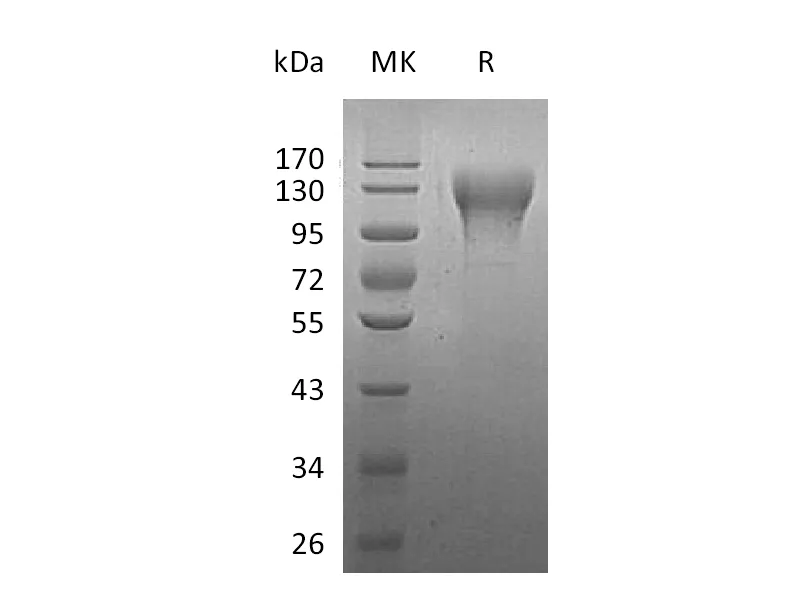
Size2:50μg price2:$108
Size3:500μg price3:$635
| Name | Recombinant Human CD96 (C-6His) |
| Purity | Greater than 95% as determined by reducing SDS-PAGE |
| Endotoxin level | <1 EU/µg as determined by LAL test. |
| Construction | Recombinant Human T-cell Surface Protein Tactile is produced by our Mammalian expression system and the target gene encoding Val22-Met503 is expressed with a 6His tag at the C-terminus. |
| Accession # | P40200-2 |
| Host | Human Cells |
| Species | Human |
| Predicted Molecular Mass | 54.4 KDa |
| Buffer | Lyophilized from a 0.2 μm filtered solution of PBS, pH 7.4. |
| Form | Lyophilized |
| Shipping | The product is shipped at ambient temperature.Upon receipt, store it immediately at the temperature listed below. |
| Stability&Storage | Store at ≤-70°C, stable for 6 months after receipt.Store at ≤-70°C, stable for 3 months under sterile conditions after opening. Please minimize freeze-thaw cycles. |
| Reconstitution | Always centrifuge tubes before opening.Do not mix by vortex or pipetting.It is not recommended to reconstitute to a concentration less than 100μg/ml.Dissolve the lyophilized protein in distilled water.Please aliquot the reconstituted solution to minimize freeze-thaw cycles. |
Alternative Names
T-cell surface protein tactile; Cell surface antigen CD96; T cell-activated increased late expression protein; CD96
Background
The cluster of differentiation (CD) system is commonly used as cell markers in immunophynotyping. Different kinds of cells in the immune system can be identified through the surface CD molecules which associating with the immune function of the cell. The CD155 ligand CD96 is a member of the Ig superfamily. Its a immunoglobulin-like protein tentatively allocated to the repertoire of human NK receptors. NK cells recognize poliovirus receptor (PVR), anectins and nectin-like protein family member serve to mediate cell-cell adhesion, cell migration, with the presence of an additional receptor, CD96. CD96 promotes NK cell adhesion to target cells expressing PVR, stimulates cytotoxicity of activated NK cells, and mediates acquisition of PVR from target cells.
Note
For Research Use Only , Not for Diagnostic Use.
